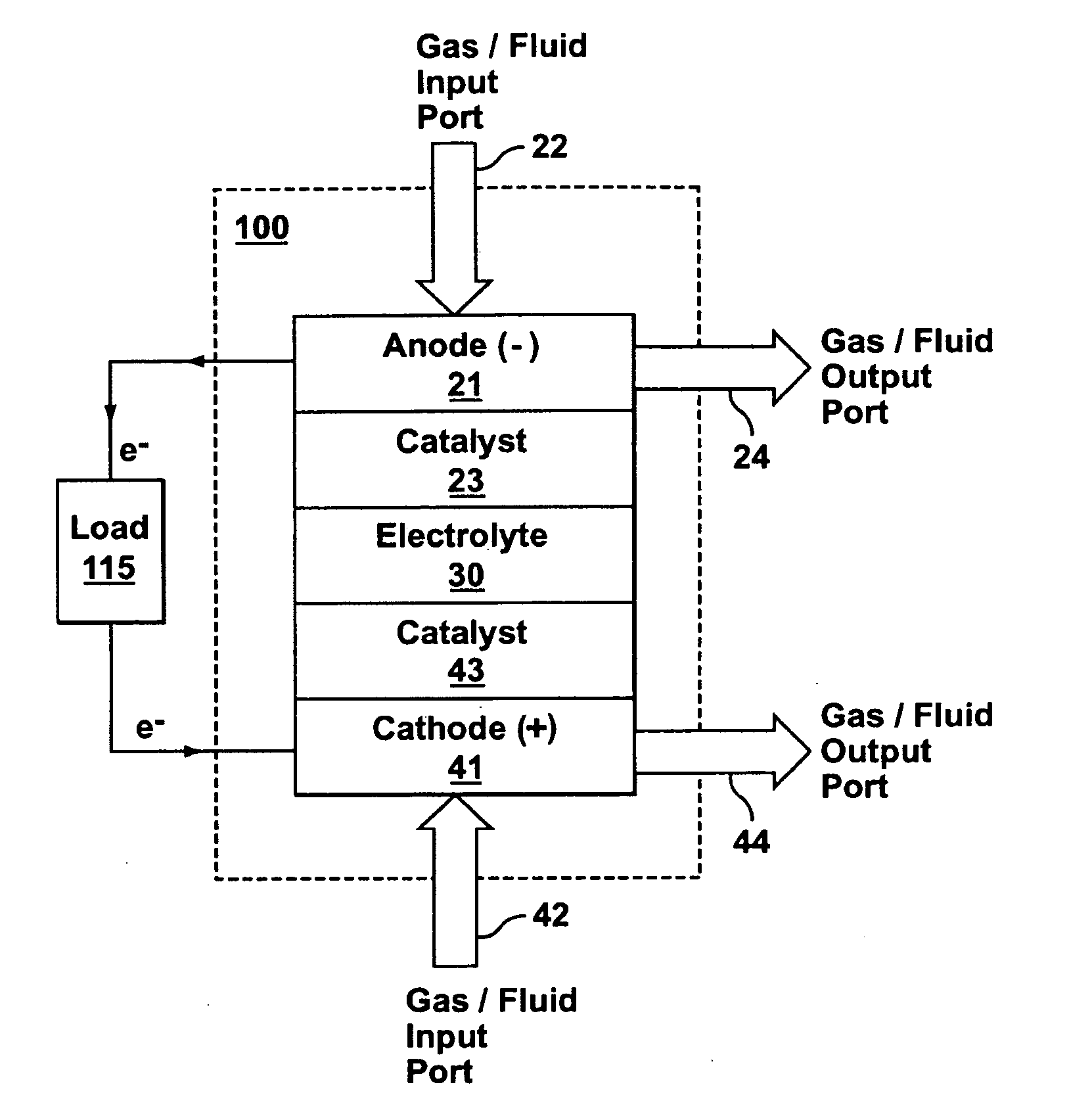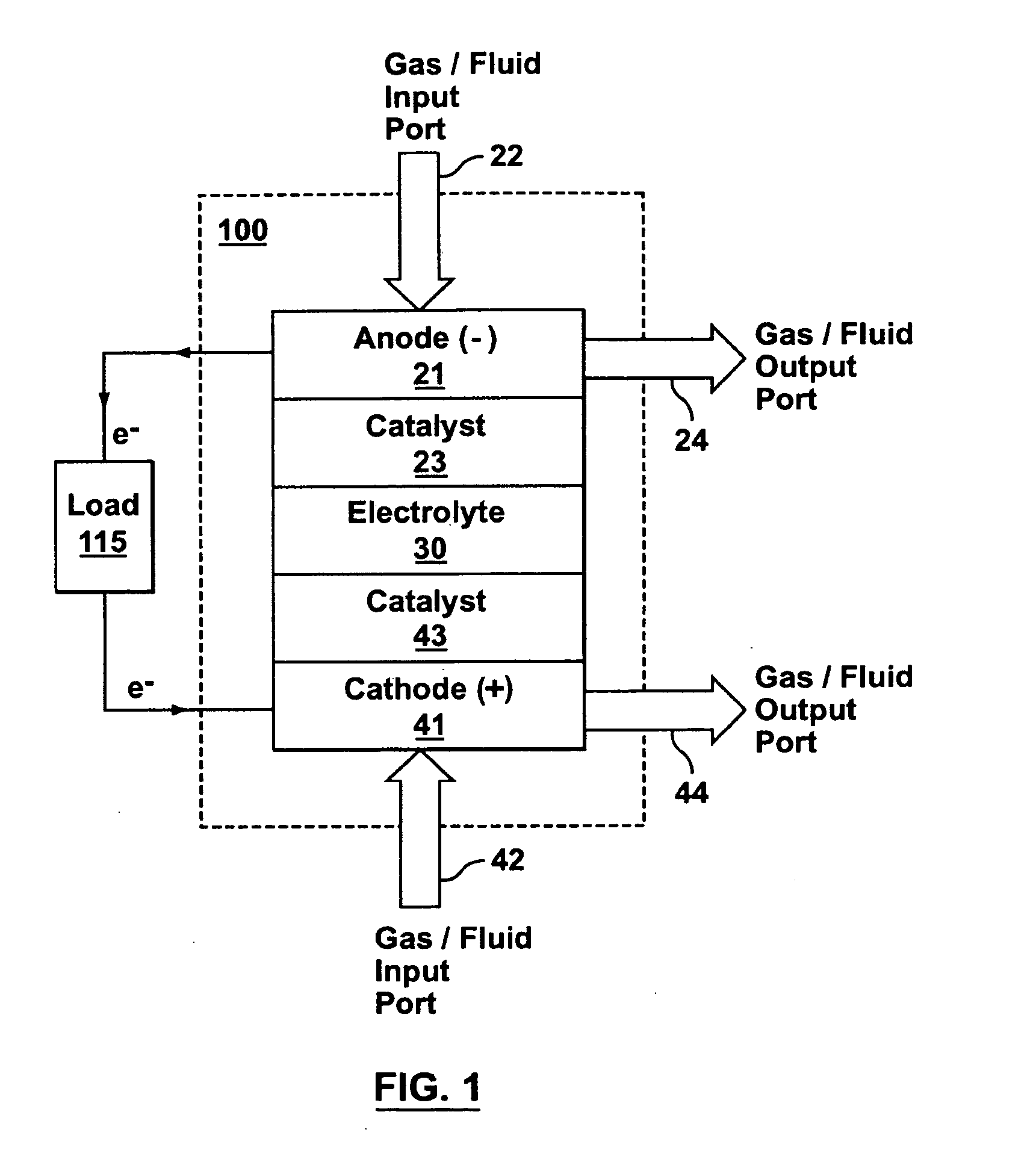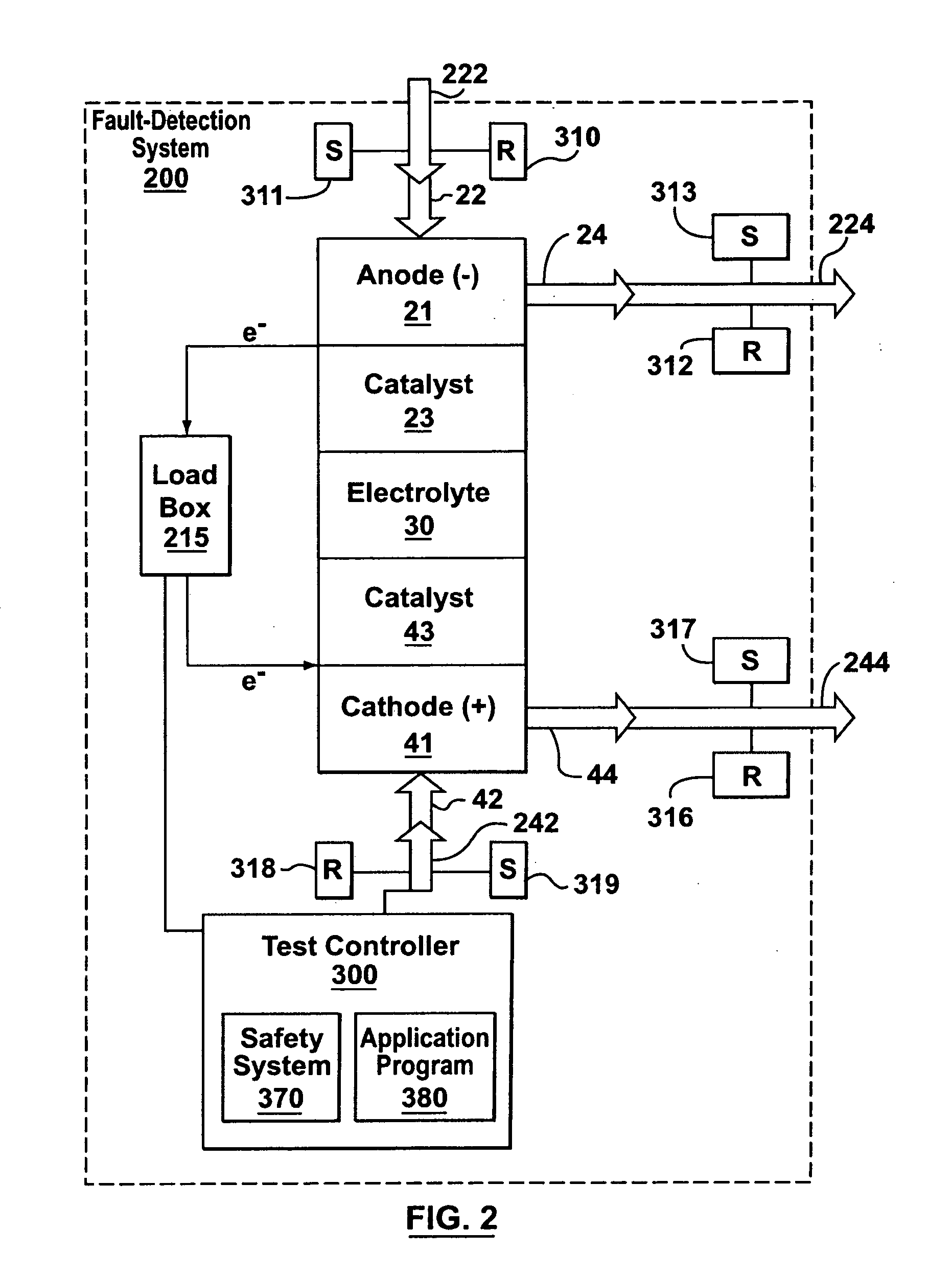Systems and methods for detecting and indicating fault conditions in electrochemical cells
a technology of electrochemical cells and fault conditions, applied in the field of electrochemical cells, can solve the problems of irreversible damage to the electrochemical membrane, permanent damage to parts of the stack, and reduced reaction reaction and product free movement,
- Summary
- Abstract
- Description
- Claims
- Application Information
AI Technical Summary
Benefits of technology
Problems solved by technology
Method used
Image
Examples
Embodiment Construction
[0053] Many fault conditions result in direct current (DC) voltage drops across an electrochemical fuel cell. Since a drop in the cell potential can be the result of many concurrent mechanisms, DC voltage measurements are usually insufficient to determine the cause of a fault. That is, for example, from measurements of voltage alone it is difficult to determine whether degradation of the fuel cell is due to dehydration, flooding, catalyst poisoning or some other fault condition. Incorrectly attributing measurements to a particular fault and subsequently applying an inappropriate response can exacerbate the degradation. Moreover, voltage drops are typically only detected once the severity of a fault condition increases to the point where damage to an electrochemical cell module may have already occurred.
[0054] By contrast, some embodiments of the present invention provide systems and methods for more accurately determining the cause of a particular fault in an electrochemical cell b...
PUM
| Property | Measurement | Unit |
|---|---|---|
| frequency | aaaaa | aaaaa |
| frequency | aaaaa | aaaaa |
| frequency | aaaaa | aaaaa |
Abstract
Description
Claims
Application Information
 Login to View More
Login to View More - R&D
- Intellectual Property
- Life Sciences
- Materials
- Tech Scout
- Unparalleled Data Quality
- Higher Quality Content
- 60% Fewer Hallucinations
Browse by: Latest US Patents, China's latest patents, Technical Efficacy Thesaurus, Application Domain, Technology Topic, Popular Technical Reports.
© 2025 PatSnap. All rights reserved.Legal|Privacy policy|Modern Slavery Act Transparency Statement|Sitemap|About US| Contact US: help@patsnap.com



